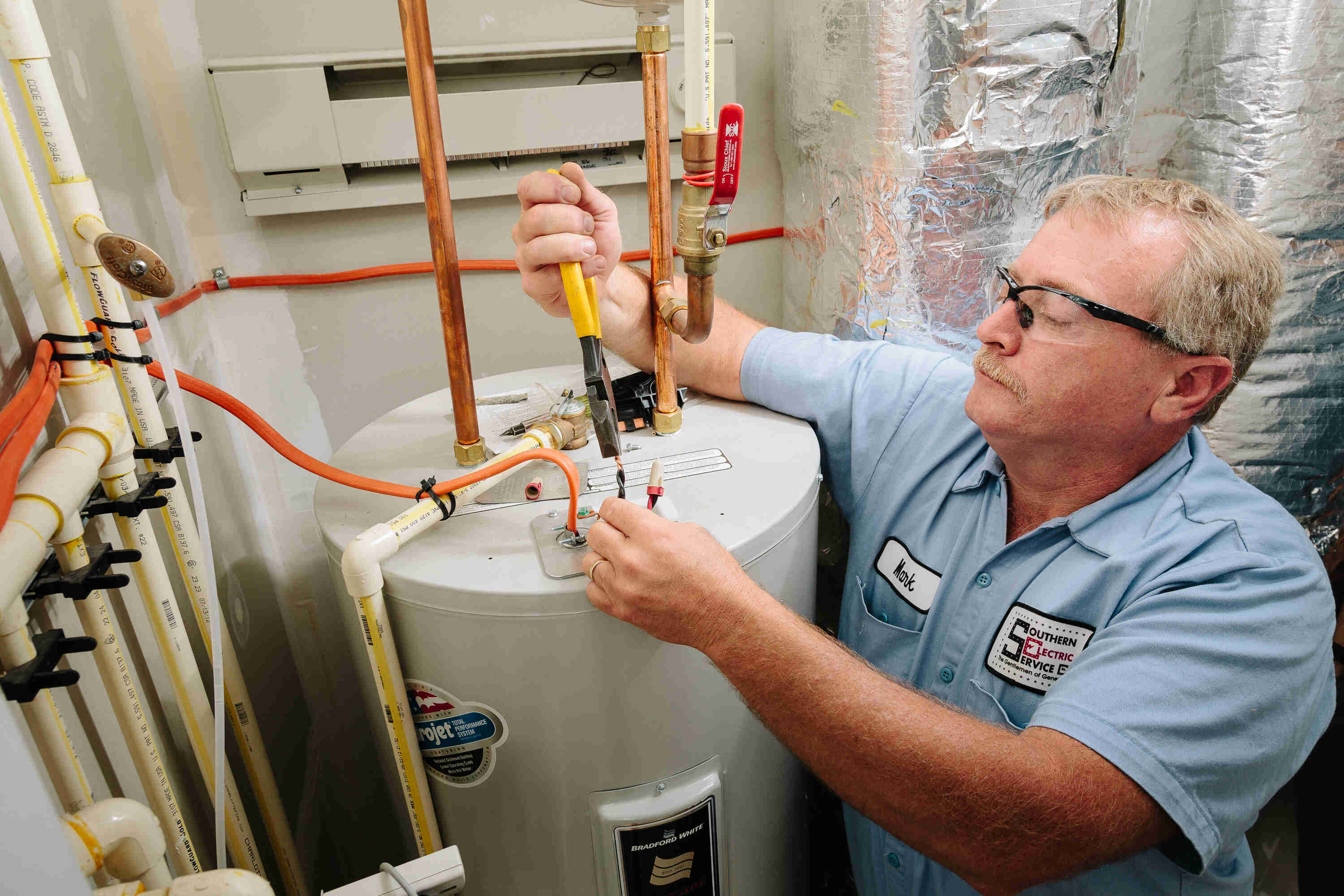Effective Strategies for Maintaining Your Home's Hot Water SystemEffective Techniques for Caring for Your Home's Hot Water System
Effective Strategies for Maintaining Your Home's Hot Water SystemEffective Techniques for Caring for Your Home's Hot Water System
Blog Article
We have uncovered this post relating to What Kind of Maintenance Do Water Heaters Need? down the page on the web and figured it made perfect sense to write about it with you in this article.

Warm water is vital for day-to-day comfort, whether it's for a revitalizing shower or cleaning meals. To guarantee your warm water system runs efficiently and lasts much longer, routine upkeep is key. This short article gives useful ideas and insights on exactly how to maintain your home's warm water system to prevent interruptions and pricey repairs.
Introduction
Keeping your home's hot water system may appear difficult, but with a couple of straightforward steps, you can ensure it runs efficiently for years to come. This guide covers everything from comprehending your warm water system to do it yourself maintenance suggestions and understanding when to contact specialist aid.
Significance of Preserving Your Hot Water System
Normal maintenance not just expands the life-span of your warm water system however likewise guarantees it operates efficiently. Overlooking maintenance can result in lowered performance, higher power expenses, and also early failure of the system.
Indications Your Hot Water System Needs Maintenance
Knowing when your hot water system needs attention can avoid major issues. Look out for signs such as inconsistent water temperature, strange noises from the heater, or rusty water.
Recognizing Your Hot Water System
Before diving into maintenance tasks, it's valuable to comprehend the standard elements of your warm water system. Commonly, this consists of the hot water heater itself, pipelines, anode poles, and temperature controls.
Monthly Maintenance Tasks
Normal month-to-month checks can assist capture small concerns prior to they escalate.
Flushing the Hot Water Heater
Purging your hot water heater removes debris build-up, boosting efficiency and prolonging its life.
Monitoring and Changing Anode Rods
Anode poles stop deterioration inside the storage tank. Inspecting and changing them when broken is vital.
Examining and Adjusting Temperature Level Setups
Changing the temperature setups makes certain ideal performance and security.
DIY Tips for Maintenance
You can perform a number of maintenance jobs yourself to maintain your hot water system in leading condition.
Checking for Leakages
Consistently examine pipes and links for leaks, as these can lead to water damages and greater expenses.
Testing Stress Relief Valves
Examining the pressure safety valve ensures it works appropriately and avoids too much pressure build-up.
Protecting Pipelines
Protecting warm water pipes lowers warm loss and can save power.
When to Call a Professional
While do it yourself maintenance is valuable, some issues call for professional proficiency.
Complicated Issues Needing Professional Aid
Examples consist of major leakages, electrical issues, or if your water heater is continually underperforming.
Regular Professional Maintenance Perks
Professional upkeep can include complete assessments, tune-ups, and ensuring conformity with safety and security requirements.
Verdict
Routine upkeep of your home's hot water system is necessary for efficiency, durability, and price savings. By complying with these pointers and understanding when to look for professional assistance, you can make certain a dependable supply of hot water without unforeseen disturbances.
Water Heater Maintenance Tips
Test the TPR Valve
Shut off the power and the cold-water supply valve. Place a bucket under the pipe connected to the temperature-pressure-release (TPR) valve on the top or side of the tank. (This valve opens if the tank pressure gets too high.) Lift the valve’s tab to let some water out, then let go. If water keeps flowing, drain the tank partway, unscrew the old valve with a pipe wrench, and install a new one. Check the Anode Rod
Put a hose to the tank’s drain cock and let out a few gallons of water. Now fit a 1 1/16-inch socket onto the rod’s hex head on top of the heater (or under its top plate) and unscrew the rod. If it’s less than ½ inch thick or coated with calcium, buy a new one, wrap its threads with Teflon tape, put it back in the tank, and tighten securely. Use this segmented rod if headroom above the tank is limited. Drain the Tank and Wash Out Sediment
Drain the remaining water in the tank into the bucket, then stir up the sediment on the tank’s bottom by briefly opening the cold-water supply valve. Drain and repeat until clean water comes out of the hose. Close the drain cock, refill the tank, and turn its power back on. Adjust the Temperature
Find the temperature dial on the side of the tank and unscrew its cover. Adjust the dial to 120 degrees using a flathead screwdriver. For every 10 degrees the temperature is lowered, you can expect to save up to 5 percent in energy costs. Turn the water heater off or the thermostat down to its lowest setting if you plan to be away from home for more than three days. Insulate the Pipes
Buy some self-sticking 3/8-inch-thick foam pipe insulation that matches the pipes’ diameter. Slide the foam over the hot-and cold-water pipes as far as you can reach. Insulating the cold-water pipe prevents condensation in summer. Peel the tape and squeeze the insulation closed. If the pipe is 6 inches or less from the flue, cover it with 1-inch-thick unfaced fiberglass pipe wrap. https://www.thisoldhouse.com/plumbing/21016402/how-to-maintain-a-water-heater

Hopefully you liked our post about Water Heater Maintenance Tips You Can't Afford to Forget. Many thanks for taking the time to browse our blog post. In case you liked our blog entry kindly be sure to pass it around. Thank you for your time. Don't hesitate to stop by our site back soon.
Request An Appointment Report this page